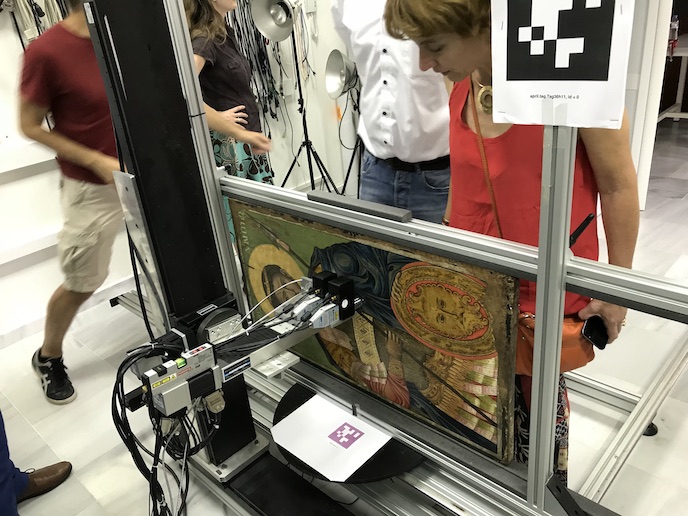‘Digital surrogates’ assist in the preservation of cultural artefacts
The EU-funded Scan4Reco project has developed a groundbreaking system that creates ‘digital surrogates’ of cultural artefacts, analysing the original object’s condition layer by layer to assist restoration and the prevention of further degradation. “Using depth-scanning cameras we first created a high-resolution 3D replica transferring as much as we could into digital files. Then, we added information about the object’s underlying layers,” says deputy project coordinator Dr Anastasios Drosou, researcher at the Information Technologies Institute of the Centre for Research and Technology Hellas in Thessaloniki, Greece. The sensor data provides detailed insights into the different strata not visible to the naked eye providing non-invasive analysis of murals, paintings, metallic objects and statues, and eliminating the need to take samples from the surface that can damage artefacts. “Very specialised sensors used in the conservation domain carry out non-destructive diagnostic analysis of the different layers that is equivalent to the more destructive chemical ones,” Dr Drosou explains. As some 3D photographic technologies only capture information from the upper visible layer, “to increase the accuracy of the reconstruction, project partner BWTEK developed a dual Raman sensor using spectography” for high-sensitivity depth scanning that goes beyond the current state of the art, Dr Drosou says. The project also devised a scaffold and mechanical grid system to ensure precision robotic scanning of all parts of the objects. From this detailed digital surrogate and layered analysis, areas of deterioration can be identified. Effect of ageing on artefacts The sensor data is combined with predictive modelling technologies using Artificial Intelligence. The deep learning algorithms simulate the artefact’s appearance as it ages. “We created several panels of main materials – for example, rectangles of paints – and put the panels in an ageing chamber to accelerate the ageing process,” Dr Drosou says. This was done with special pigments in use in the Byzantine era, and with metallic materials, mainly silver and bronze, to obtain measurements on changes in specific materials over time, with or without interventions. Based on this, the project created a massive, publicly available database. Artificial intelligence-assisted systems were also developed for treatments for the corresponding defects. Conservationists “are able to intervene at any time during the simulation, apply changes and then go on with the simulation to show the effects of ageing,” Dr Drosou explains. “Our system scans the item, automatically detects the defects and then automatically produces a text in natural language suggesting some actions conservators can take to prevent potential future damage or minimise existing damage,” he adds. For example, if the system detects a scratch, and some colour fading elsewhere in a painting, “the system would advise them (conservators) to apply a particular chemical on the scratch, or paint or cleaner in the other area.” Prototype system A prototype was pilot-tested at the Opificio delle Petre Dure conservation laboratory in Florence, Italy that specialises in metallic items, and at Ormylia Foundation, a renowned art diagnosis centre in Greece specialising in preserving Byzantine items. The prototype combines the specialised sensors, sensor drivers, the processing unit for the specialised AI algorithms and the robotic scanning elements, using the feedback from Italy and Greece to improve the system before moving to the sales stage. The project also created a virtual museum. Created by professional architects to closely resemble the feeling of a being in a real museum, it is populated with the digital replicas studied during the project.
Keywords
Scan4Reco, Byzantine, cultural heritage, culture, paintings, restoration, statues, artworks, artefacts, artificial intelligence

